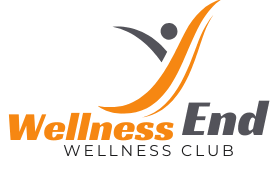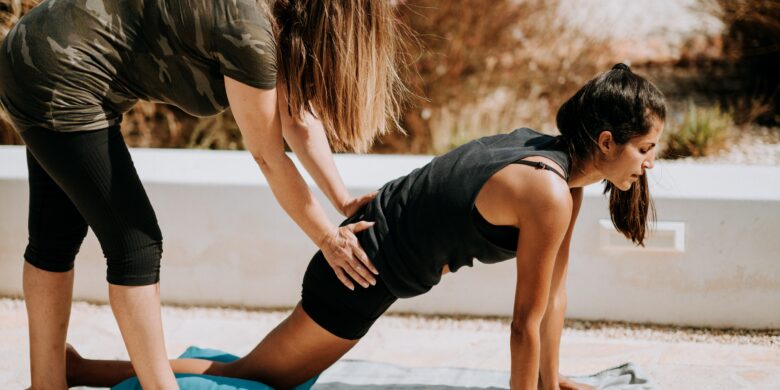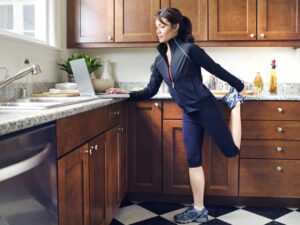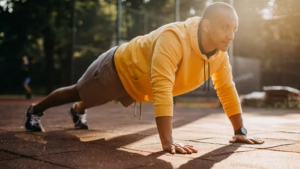This term refers to workouts and other physical activities that prepare your body for the things you do every day. Some of these are bending, lifting, standing, walking, turning, pushing, and pulling. These acts may seem simple, but they are very important to how we live our daily lives. As we do things like getting out of bed and getting the groceries, useful movement helps us do them quickly and safely. You can’t say enough good things about this kind of movement, especially when you think about how it affects health and quality of life in the long run.
What Does Functional Movement Mean?
Functional movement is when you use a lot of different muscle groups and joints together to do things that look and feel like things you do in real life. Functional training is different from individual workouts that only work on one muscle. It works on building balance, strength, stability, and flexibility all at the same time. Functional exercises are ones that look and feel like the things we do every day, like squats, lunges, deadlifts, step-ups, and push-ups. A body that is stronger and more flexible can handle the physical pressures of daily life with ease.
How functional movement makes everyday life better
One of the best things about adding useful movement to your practice is that it makes your daily life better. The body moves better when it’s in good shape. Balance, strength, and flexibility are needed to do things like carry bags, climb stairs, or reach for something high up. Functional movement teaches the body to work as a whole, which means fewer aches and pains, a lower chance of getting hurt, and more energy all day. It also makes you more coordinated and quick, which are important skills for staying independent as you age.
Natural movement can help keep you from getting hurt
When the body is forced to move in ways it isn’t ready for, injuries often happen. Strains and joint pain are more likely to happen if you have bad posture, muscle issues, or aren’t flexible. Functional movement trains the muscles and joints to move the way they were meant to, which makes the body stronger all over. Your body is more sturdy and less likely to get hurt during workouts and everyday tasks when you build a strong base through right movement patterns.
Functional movement helps people age in a graceful way
Keeping your strength and movement up is more important as you get older. Over time, bone structure, muscle bulk, and joint health all tend to decrease. Functional exercise helps keep these things up. Simple activities like squats with your own body weight, light training, and dynamic stretching can help a lot in slowing down the aging process. Functional training can help older people be more independent, avoid falling, and have a better quality of life in general. Even as you get older, it keeps your body strong, flexible, and grounded.
Getting better posture and stronger core
When you sit and look at a screen for long periods of time, your posture can get bad. It can cause back pain, stiff muscles, and trouble moving around. By making the muscles around the spine stronger and the core more stable, functional workouts can help fix bad posture. A strong core protects the lower back, eases stress on the spine, and makes it easier to move with control and ease. By teaching the body to use its core while doing daily tasks, functional movement stops people from slouching and putting too much stress on their bodies.
Link Between Functional Fitness and Mental Health
Moving around has effects on more than just the body. It also has a big effect on mental health. Full-body, active movements that raise the heart rate and make hormones flow are common parts of functional workouts. These chemicals make you feel good, lower your stress, and help your brain work better. When you do useful activity, especially when you have to focus, coordinate, or balance, it improves the link between your mind and body. A lot of people who train properly say that it makes them feel more confident, aware, and mentally sharp in their daily lives.
Functional Strength Building Without Tools
Functional movement is something you can do without spending a lot of money on a gym ticket or exercise gear. You can do a lot of workouts with just your body weight. Squats, planks, bridges, and step-ups are all great exercises that you can do at home. These routines work out a lot of different muscle groups and make the body move better. Some people like to work out more advanced, and resistance bands or simple free weights can make it more difficult. The most important things are regularity and good form, not the tools you use.
Rehabilitation and Getting Back to Normal
A lot of physical treatment and recovery use functional movement. Getting back to being able to move freely and comfortably is important for long-term healing after an accident or surgery. Therapists often show patients simple practical workouts that can help them get their strength, movement, and balance back. These moves not only help the body heal, but they also teach it how to move safely, which keeps problems from happening in the future. Functional therapy focuses on things that people do in their everyday lives, which makes it very useful and good for their long-term health.
Functional Movement and Performance in Sports
In order to get better, athletes in all sports do useful training. These workouts help players get faster, stronger, and more flexible by making them move like they do in sports. Functional training improves power and speed on the field or court by working on muscle balance and rhythm across the whole body. Functional movement is the key to becoming the best athlete you can be, whether you want to improve your jump shot, running speed, or golf swing. This way of training is good for all players, not just serious ones, because it makes you stronger, more durable, and less likely to get hurt.
Long-Term Advantages of Living a Functional Fitness Lifestyle
Functional exercise is good for you in more ways than just the gym. People who focus on moving in ways that are in line with their natural abilities get hurt less often, have more energy, and feel better about their bodies. These habits help your heart stay healthy, your muscles get stronger, and your balance gets better over time. Functional exercise turns into a way of life, not a phase, that helps people stay independent, healthy, and happy generally. It’s not about doing crazy workouts or setting goals that are too high. It’s about getting your body ready for real life.
Getting started with a functional movement routine
It is easy to start a practical exercise practice. Start with simple moves like squats with your own body weight, glute bridges, standing calf raises, and light core work. Instead of speed or energy, work on control and skill. Stretching before and after helps loosen up muscles and make them more flexible. You can try more energetic moves or add light pressure as you feel more comfortable. It’s important to keep going and pay attention to your body. Quality, not number, is what functional activity is all about.
Getting moving every day
You don’t have to do a structured workout to include useful movement in your daily life. To pick up things, you can squat. During screen breaks, you can stretch. Instead of taking the lift, you can take the stairs. Over time, these little habits add up to big changes. Your body stays strong, flexible, and adaptable without having to do hard or time-consuming practices when moving is natural to you. Every day choices affect your health over time. One of the easiest and most effective choices you can make is to move your body in a way that is useful.




